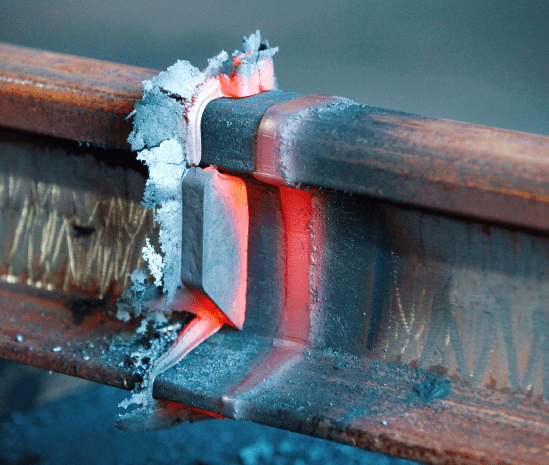Welding WPS: Typical Errors to Avoid and How to Correct Them
Welding WPS: Typical Errors to Avoid and How to Correct Them
Blog Article
The Ultimate Guide to Welding WPS Procedures: A Comprehensive Introduction for Welders
In the intricate world of welding, Welding Treatment Requirements (WPS) offer as the backbone of making sure top quality, consistency, and safety in welding operations. Comprehending the subtleties of developing, executing, and checking WPS procedures is necessary for welders aiming to elevate their craft and meet sector criteria. As we look into the various components of a WPS and explore the details of qualification and certification, we will certainly reveal the crucial duty these treatments play in the world of welding. Let's embark on a journey to unwind the complexities and relevance of WPS treatments in welding methods.
Relevance of WPS Procedures
Comprehending the relevance of Welding Procedure Specifications (WPS) treatments is vital for making sure the high quality and integrity of bonded structures. WPS procedures work as a roadmap for welders, detailing the required steps, criteria, and products required to attain a sound weld. By adhering to WPS standards, welders can guarantee consistency in their job, resulting in dependable and structurally audio welds.
Among the main reasons WPS treatments are vital is their duty in keeping weld quality and integrity. Adhering to the defined welding criteria and techniques detailed in the WPS helps protect against flaws such as porosity, cracking, or insufficient fusion, which can endanger the stamina and resilience of the weld. In addition, WPS treatments are vital for guaranteeing conformity with market requirements and codes. By following well established WPS standards, welders can show that their work fulfills the needed demands for safety and security and high quality, giving assurance to customers, assessors, and regulatory bodies. Fundamentally, the importance of WPS procedures can not be overemphasized, as they are basic to accomplishing regular, top quality welds that satisfy industry requirements and requirements.

Components of a WPS
A Welding Procedure Requirements (WPS) typically consists of necessary elements that detail the specific needs for performing a weld, ensuring uniformity and high quality in the welding process. The vital elements of a WPS consist of important variables such as base metals, filler steels, interpass and preheat temperatures, welding procedures, securing gases, welding positions, and post-weld warm treatment needs.
Base metals describe the materials being signed up with, while filler metals are used to fill up the gap in between the base metals throughout welding. Preheat and interpass temperatures are essential for managing the heat input and stopping issues like fracturing or distortion. The welding process details the specific strategy to be used, whether it's gas metal arc welding (GMAW), secured metal arc welding (SMAW), or an additional method. Securing gases protect the weld swimming pool from atmospheric contamination. Welding settings specify the orientations in which welding can be done. Post-weld heat treatment might be necessary to eliminate tensions and boost the weld's homes. A thorough understanding of these elements is vital for creating a comprehensive and reliable WPS.

Certification and Accreditation
Having actually developed the crucial components of a Welding Procedure Spec (WPS), the emphasis currently moves in the direction of the crucial aspects of qualification and accreditation in welding methods.

Certification, on the other hand, is the official recognition of a welder's credentials by a relevant qualification body or organization. Welding accreditations are generally based upon the specific welding processes, products, and positions a welder is qualified to collaborate with. Holding a legitimate welding qualification demonstrates that a welder fulfills industry standards and is qualified to perform welding tasks to the called for specifications.
Creating a WPS
To establish a Welding Treatment Specification (WPS) that meets market criteria, mindful consideration of welding procedures, materials, and operational parameters is necessary (welding WPS). The primary step in creating a WPS is to determine the welding procedure to be made use of, such as gas steel arc welding (GMAW) or shielded metal arc welding (SMAW) Once the welding process is identified, the following critical facet is selecting the appropriate materials, thinking about aspects like base steel kind, density, and joint layout. Functional criteria such as welding existing, voltage, traveling rate, and securing gas composition must also be carefully defined in the WPS.

Applying and Keeping An Eye On WPS
Upon completing the detailed Welding Procedure Requirements (WPS) that thoroughly information welding procedures, materials, operational specifications, and high quality guarantee procedures, the emphasis moves to effectively carrying out and checking the well-known treatments. Execution entails guaranteeing that all welders associated with the task know with the WPS and follow it thoroughly throughout the welding process. This needs supplying appropriate training and supervision to assure adherence to the defined treatments. Keeping an eye on the WPS entails constant oversight to confirm that welding activities align with the recorded specs. Examinations, screening, and quality assurance steps are important components of the surveillance procedure to determine any deviations or concerns without delay. Routine her comment is here audits and evaluations of the welding treatments assist in maintaining uniformity and high quality throughout the project. Efficient execution and tracking of the WPS Learn More are crucial for making certain the stability, strength, and safety of the bonded joints, eventually adding to the overall success of the welding task.
Conclusion
To conclude, understanding and adhering to Welding Procedure Specs (WPS) is critical for welders to ensure top quality, uniformity, and security in their work. By recognizing the parts of a WPS, acquiring proper qualifications and certifications, developing in-depth procedures, and carrying out and checking them efficiently, welders can enhance their abilities and proficiency in welding techniques. Adhering to WPS treatments is crucial for producing top quality welds and conference industry criteria.
In the elaborate world of welding, Welding Procedure Requirements (WPS) serve as the foundation of ensuring quality, consistency, and security in welding procedures. The welding procedure lays out the details strategy to be utilized, whether it's gas steel arc welding (GMAW), shielded metal arc welding (SMAW), or another technique.To develop a Welding Treatment Requirements (WPS) that fulfills market requirements, mindful consideration of welding processes, materials, and operational parameters is vital. The initial step in developing a WPS is to recognize the welding procedure to be utilized, such as gas metal arc welding (GMAW) or protected metal arc welding (SMAW)Upon completing the detailed Welding Treatment Requirements (WPS) that meticulously details welding processes, materials, operational parameters, and high quality assurance procedures, the emphasis moves to properly applying and keeping an eye on the well-known treatments.
Report this page